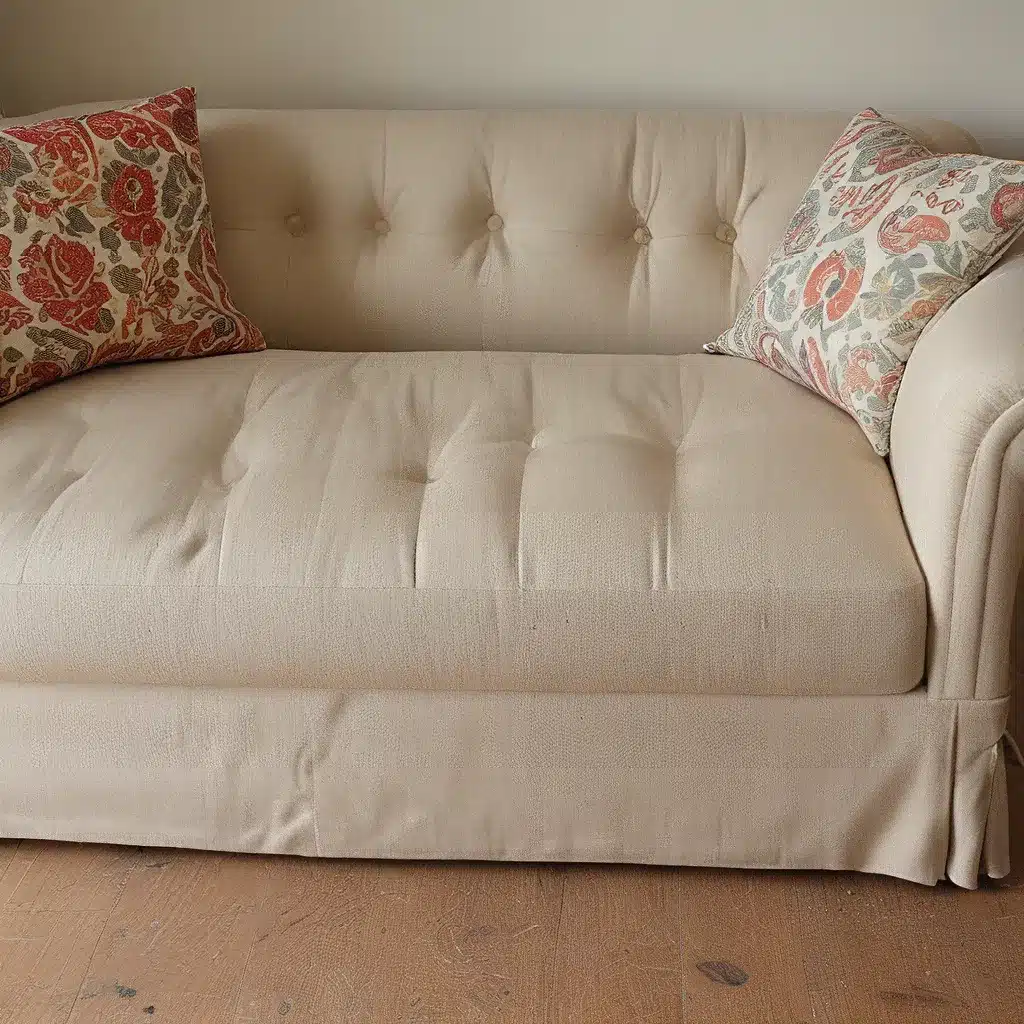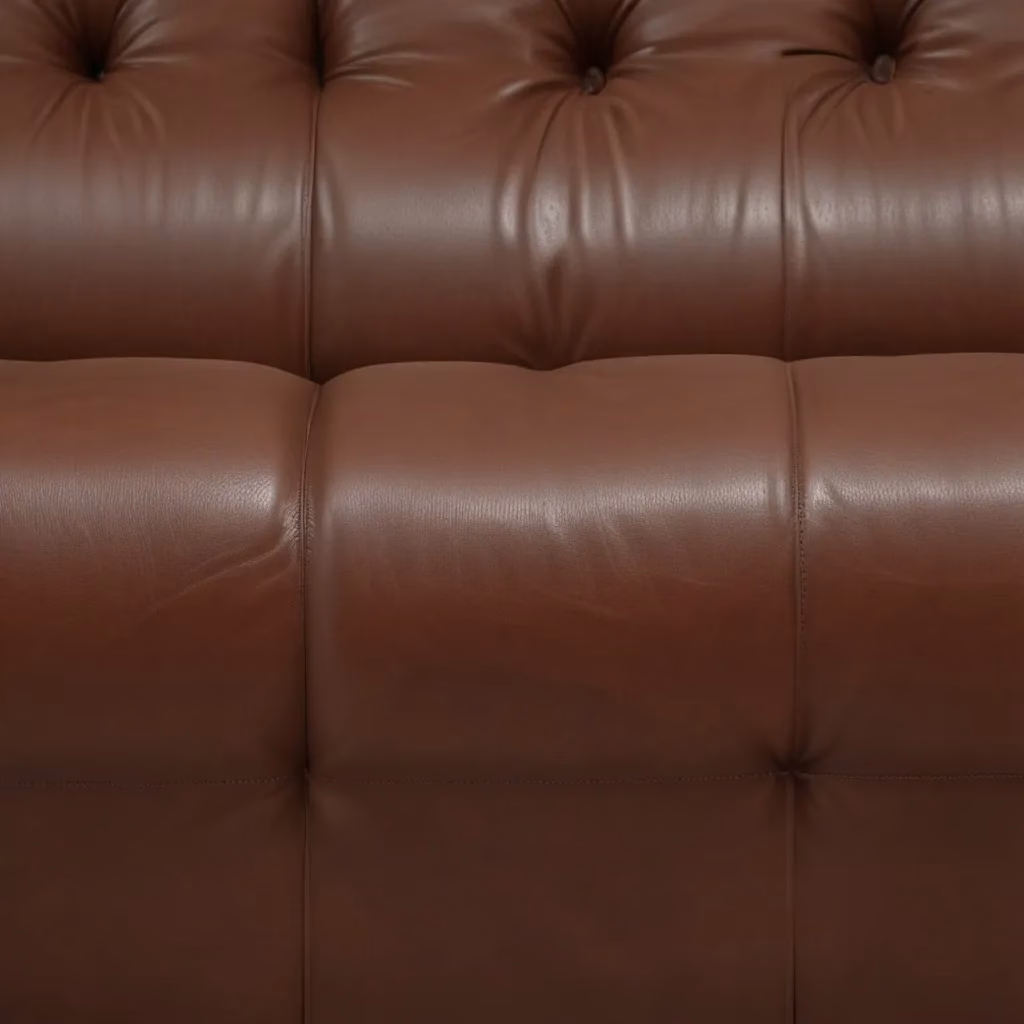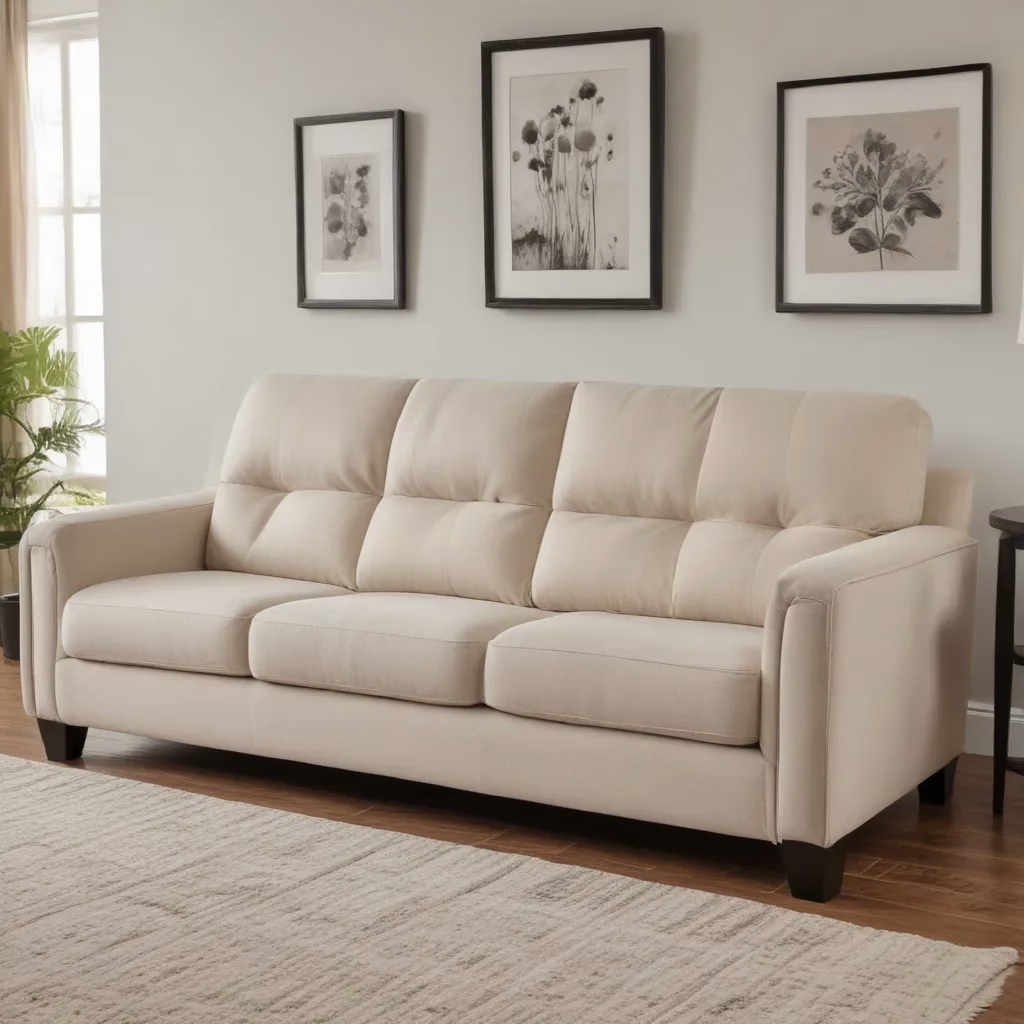
If you’re anything like me, your sofas have probably seen better days. When I think back to the first couch my wife and I bought as newlyweds, I can’t help but cringe. That faux-leather monstrosity quickly started peeling and sagging, looking more like a bird’s nest than a proper place to lounge. But like many of us, I couldn’t bear to part with it. After all, it held so many memories – both good and bad!
Well, I’m here to tell you that there’s hope for that tired old sofa of yours. In fact, with a little elbow grease and creativity, you can breathe new life into your living room centerpiece. In this guide, I’ll walk you through the process of reupholstering and upcycling your sofa, step-by-step. By the time we’re done, you’ll have a showpiece that’s the envy of all your friends (and a few bragging rights for yourself too!).
Assess Your Sofa’s Condition
The first step in any good remodel is to take a hard, honest look at what you’re working with. Grab a cup of coffee, plop down on that sorry excuse for a couch, and really examine it.
Is the frame still sturdy, or is it wobbling at the joints? Are the cushions hopelessly flattened, or do they still have some bounce left in them? And let’s not forget about the upholstery – is it ripped, stained, or faded beyond recognition?
Don’t be afraid to get up close and personal. Flip the cushions over, poke around the seams, and really get a feel for the sofa’s overall condition. This will help you determine whether a simple reupholstering job will do the trick, or if you need to get a bit more creative with an upcycling project.
Reupholstering: Breathe New Life Into Your Sofa
If the bones of your sofa are still in good shape, reupholstering might be the way to go. This process involves removing the old fabric and replacing it with fresh, high-quality upholstery. It’s a bit of a time-consuming task, but the results are well worth it.
As one blogger recounts, even an “atrocious” faux-leather couch can be transformed with a little elbow grease. By carefully removing the old fabric and sewing new custom cushions, she was able to create a stylish sectional that fit her space perfectly.
The key to successful reupholstering is taking your time and paying attention to the details. Start by removing the old fabric, being careful not to damage the underlying structure. Then, use the existing pieces as patterns to cut your new upholstery fabric.
When it comes to the cushions, you’ll want to pay close attention to the shapes and sizes. Some bloggers recommend copying the design of your old cushions to ensure a seamless fit. Don’t be afraid to get creative with zippers, piping, and other decorative touches to really make your sofa stand out.
Upcycling: Transform Your Sofa into Something New
If your sofa is truly past its prime, it might be time to get a bit more creative with an upcycling project. This involves taking the existing frame and transforming it into something completely new and unexpected.
One blogger I came across transformed an old, sagging couch into a custom sectional that fit her basement theater room perfectly. By building custom boxes to extend the frame and sewing new cushions, she was able to create a unique piece of furniture that perfectly suited her needs.
The key to successful upcycling is being willing to think outside the box. Don’t be afraid to disassemble your sofa and get a bit experimental. Maybe you transform the frame into a daybed, or repurpose the cushions into throw pillows. The options are truly endless!
Of course, upcycling does require a bit more elbow grease and a willingness to get your hands dirty. You’ll need tools like a pneumatic nailer, a circular saw, and an assortment of upholstery supplies. But trust me, the sense of accomplishment you’ll feel when you step back and admire your handiwork is worth it.
Choosing the Right Fabrics and Finishes
Once you’ve decided on your remodeling approach, it’s time to start thinking about the fun stuff – fabrics and finishes! This is where you can really let your personal style shine through.
When it comes to upholstery fabrics, the options are seemingly endless. Do you want to go for a classic, neutral tone like beige or gray? Or are you feeling bold and adventurous, with a vibrant pattern or rich jewel-toned velvet? The blogger I mentioned earlier opted for a washable yellow-denim slipcover, which gives her sectional a laid-back, casual vibe.
And don’t forget about the little details! Piping, tassels, and buttons can all add a touch of personality to your sofa. Plus, you can get really creative with the trim – why not try a contrasting color or an unexpected material like leather or velvet?
As for the finish, you’ve got a few options. If you’re going the reupholstering route, you might want to keep things simple and classic with a smooth, tight-fitting fabric. But if you’re upcycling, you can get a bit more experimental. Maybe you want to distress the frame to give it an antique look, or paint it a bold, eye-catching color.
Ultimately, the key is to choose materials and finishes that reflect your personal style and complement the overall aesthetic of your living space. Don’t be afraid to mix and match, and have fun with the process!
Putting It All Together
Alright, now that you’ve got a plan and you’ve chosen your fabrics and finishes, it’s time to get to work! Reupholstering and upcycling your sofa is no small feat, but with a little patience and attention to detail, you can transform that tired old couch into a stunning centerpiece.
If you’re reupholstering, start by carefully removing the old fabric and taking note of how everything is assembled. Then, use those existing pieces as patterns to cut your new upholstery. Don’t forget to pay close attention to those cushions – you want them to fit like a glove!
For an upcycling project, you’ll need to get a bit more hands-on. Break out your power tools and start disassembling that sofa frame. Maybe you want to build custom boxes to extend the size, or add some decorative woodwork to give it a fresh look. And don’t forget to replace any worn-out webbing or springs while you’re at it.
No matter which route you choose, take your time and don’t be afraid to ask for help. Enlist the expertise of a local upholsterer or woodworker if you’re feeling stuck, and don’t hesitate to reach out to online communities for advice and inspiration.
And once you’ve completed your project, don’t forget to sit back, admire your handiwork, and bask in the glory of your newly remodeled sofa. After all, Sofa Spectacular is right – your living room is about to become the envy of the neighborhood!



